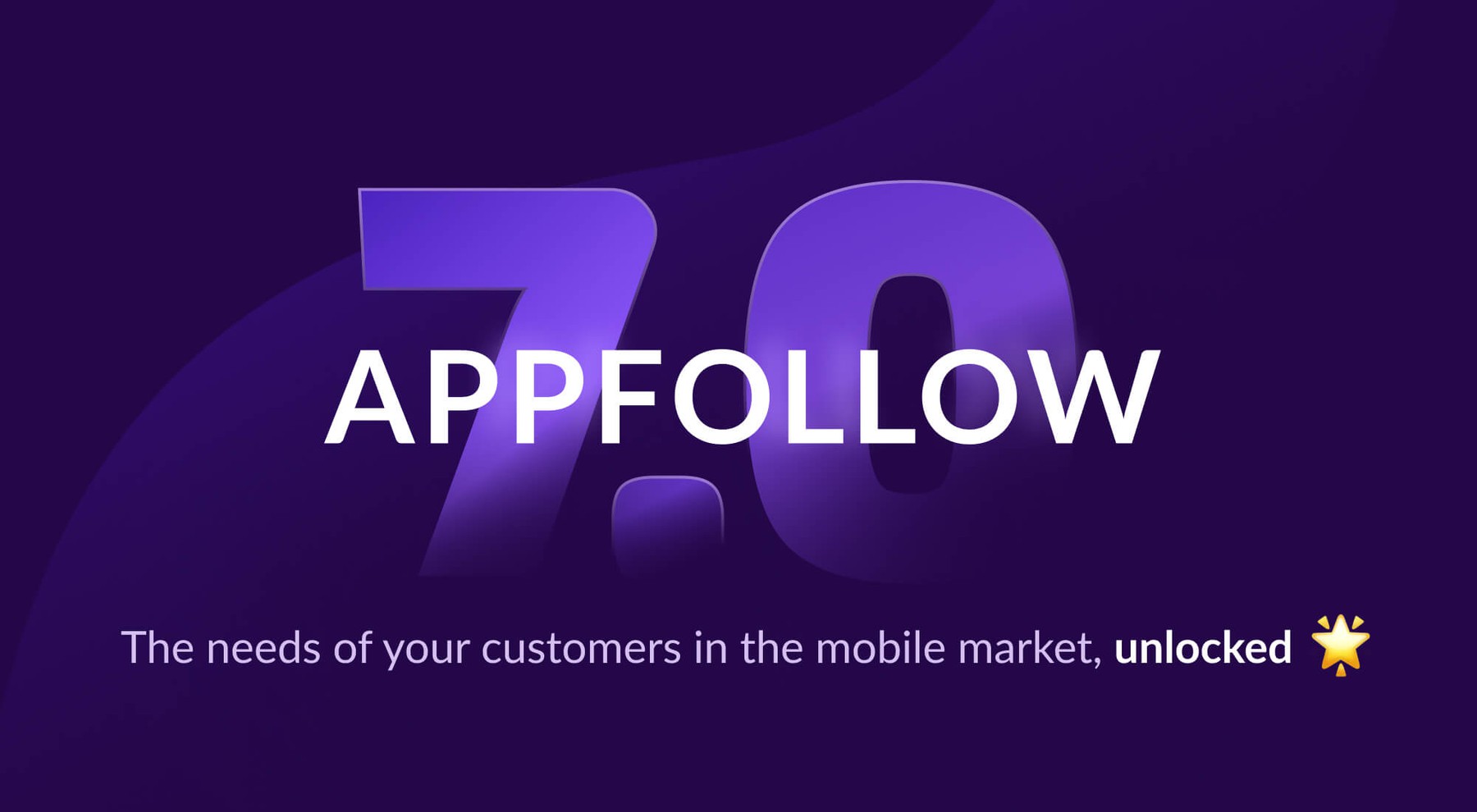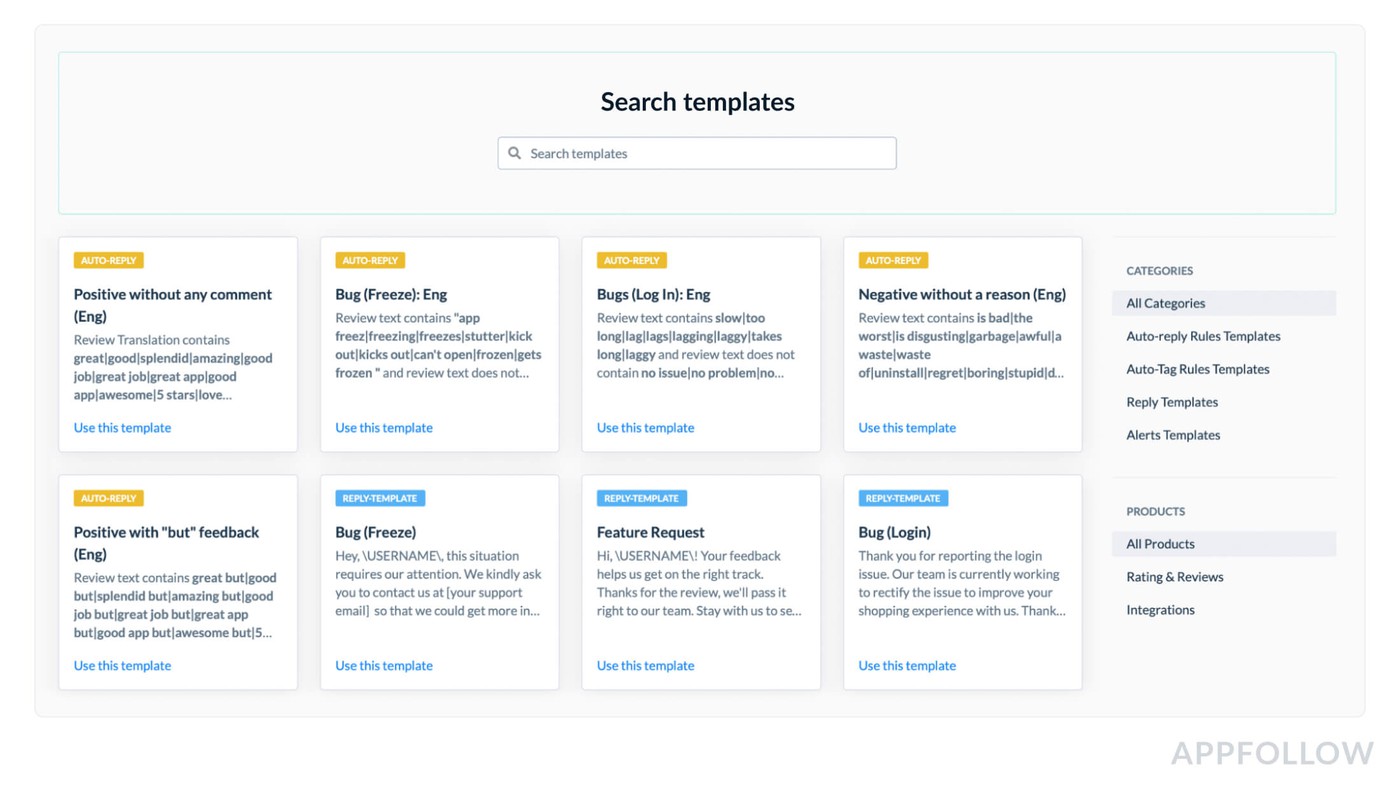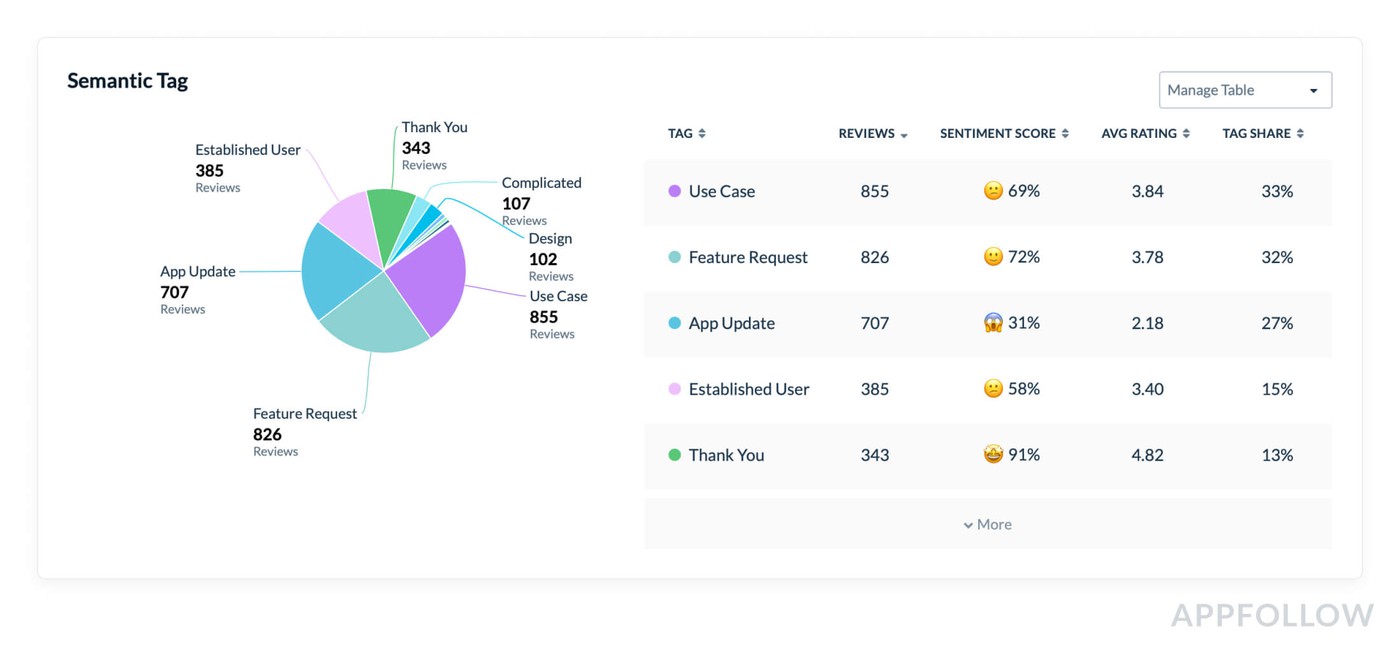The quick guide to AppFollow 7.0

Table of Content:
The recent Product Hunt launch on the 30th of September announced the next step in the AppFollow product roadmap — which is big news for both the team and users.
With a range of new features & updates included in the launch, AppFollow 7.0 has a variety of exciting capabilities. They have been designed to unlock product insights, aid growth strategies, and enable efficient review management at scale.
So what exactly is new?
Scalable review management
Our new Compare feedback tool is the must-have for any customer support lead working to optimize their reply strategy. When it comes to viewing competitors’ feedback metrics, the sky's the limit with AppFollow. You have access to a comprehensive breakdown of rivals' reply management performance, such as:
- total reviews
- reply rate,
- average reply time
- reply effect
Having access to these metrics provides key insights into how you can improve your support strategy. This will help you outperform everyone else in the market by providing a stellar customer experience.

You can also track these for your app to see how your support agents are doing & if they’re meeting their KPIs successfully. It allows you to continuously evaluate the volume of replies & tagged reviews per agent. You're also provided on the dashboard:
- the overall CSAT score
- average reply time
- replies submitted
- tagged & reported reviews


The recent update to Semantic analysis enables you to automate up 90% of your support workflow. This is achieved by using:
- bulk actions & bulk reply
- automatic flagging
- tag reporting to relevant teams
- auto-report fake or spammy reviews
- bug reporting
Demographic analysis allows you to evaluate the effectiveness of your support across languages and regions. The real magic, though, is that Semantic analysis auto-translates & group reviews into your native tongue from 20 different languages. It allows for quick & efficient analysis of reviews from across the world without the costly & time-consuming hiring of a translator.

Another new feature is the Templates library, which is extremely handy for whenever you need to find a well written and relevant response - that also abides by replying best practices - to a particular type of user review. The library is a treasure trove of replies templates, auto-reply rules, Smart alerts, and auto-tag rules.

Templates library gives you a head start on automation, with all these templates available with one click.
Being on a customer support team can be hectic, with what feels like a million different things for you to review at any point in time. Sometimes it’s not possible to spend time checking different platforms for updates & changes to reviews. Our solution is Smart alerts — whenever there are review spikes, rating changes, or updates, a notification will be sent straight to your channel of choice so that you’re always up to date and can plan a response as soon as they come in.

With Phrase analysis, you can track a list of words or phrases commonly used in reviews. It breaks down the analysis of each one according to a set of metrics for your evaluation:
- Average ratings for reviews with a listed word or phrase
- The sentiment of reviews with a listed word or phrase (based on the correlation between positive and negative reviews)
- The number & percentage of reviews with that word or phrase in the total number of reviews for the app
- The three most assigned semantic tags for reviews that use the listed word or phrase
- Trend showing the pattern of impact of a listed word or phrase— when it trends in use for negative reviews (red) or positive reviews (green)

It’s the perfect complement to review management and automation. You can find & track the most popular, trending words or phrases and see how - and for what reasons - they're being used in your reviews. You can then set auto-replies, bulk actions, other rules- based tags linked to those words.
A feedback stream for the product roadmap
Demographic analysis is where you can find what countries are requesting specific features or mentioning a particular issue. You can use it to set priorities by pushing through feature requests depending on the countries you’re targeting.

Semantic analysis also allows product teams to explore what features competitors are missing to fill in the gaps with their app.
You can analyze customer sentiment over time to check if a new update or feature has improved the customer experience. This is traced incredibly accurately through sentiment analysis from the same tool.

Using Compare feedback, product managers can also understand the strengths & weaknesses of competitor apps. What is pleasing to customers? What are they missing that users are requesting? What’s the most common mention?

Smart alerts is a great automation for the product team. Automatic notifications can be sent to everyone when a review with the following tags appears:
- ‘Feature Request’
- ‘Design’
- ‘App Update’
It ensures the team is up to date with everything related to product performance.
Understand the mobile market like never before
If you’re a marketer, you’ll want to understand when and where to focus your marketing that’ll improve visibility, conversion and acquisition.
Compare feedback is an ideal tool for your marketing toolbox. Specifically, ratings by countries, which shows you the worldwide presence for your app alongside competitors. This will help you prioritize marketing effort and spend.

Another handy feature is Compare discovery, which sits in our Competitor analysis suite. You can use it to develop your growth strategy. It allows you to
1. Study the leaders in your industry. You’ll be able to analyze the competitive landscape and identify those trending in the app stores.
2. Discover the store performance of your competitors and see where you stand in regards to visibility.
3. Optimize your ASO strategy using non branded keyword share. See how much traffic you’re getting across keywords against your competitors.

Semantic analysis makes it super easy for marketers or community managers to find great testimonials to be used as social proof. It’s great for customer marketing too as it provides marketers with a deeper understanding of what users love and their pain points which they can use to develop more accurate target personas. These learnings can be implemented into marketing campaigns, leading to higher resonance & conversion rates. Don't forget to use 5 star review response examples to cover all the bases when it comes to use reviews.
You can also turn Semantic analysis on your competitors. This gives you the upper hand in marketing, as you'll see what features they lack, weaknesses in their monetization strategy, where they are failing to satisfy customers, the reported quality of their product, and general engagement across regions. Showing true differentiation of what your product uniquely provides in marketing campaigns can be a powerful tool of persuasion.
Smart alerts keep the marketing team up to date with how the app is performing. They will receive alerts to their most-used channels for:
- Whenever the app gets into the top charts
- When there are changes in in-app ratings
- Regular summaries of revenue & downloads
Handle reviews like a boss with rep management software.



